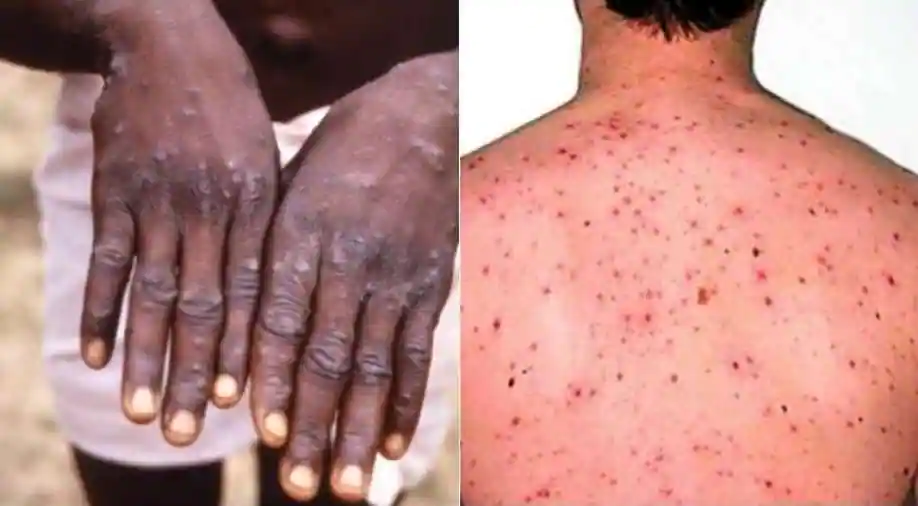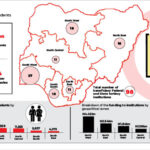On the 7th of May 2022, the UK Health Security Agency (UKHSA) confirmed a monkeypox case in the United Kingdom.
The patient is receiving treatment in an isolation unit and being cared for at the expert infectious disease unit of the Guy’s and St Thomas’ NHS Foundation Trust, London.
Dr Nicholas Price, director of the unit, said: “The patient is being treated in our specialist isolation unit at St Thomas’ Hospital by expert clinical staff with strict infection prevention procedures.”
In the wake of the Covid-19 pandemic, alerts of little-known diseases like monkeypox can seem alarming, but the experts caring for the patient have insisted the overall risk to the general public is very low.
Lagos and Adamawa states had the highest figures of three each as Nigeria recorded 15 confirmed cases of monkeypox in seven states between January 1 and April 30, 2022; though there are no reported active cases.
The Nigeria Centre for Disease Control disclosed this in its latest monkeypox situation report on Tuesday 10th May, 2022; even as it said no death has been recorded this year as a result of the disease.
The NCDC situation report reads: “Since September 2017, Nigeria has continued to report sporadic cases of monkeypox. The Monkeypox National Technical Working Group has been monitoring cases and strengthening preparedness/response capacity.”
What is Monkeypox?
Monkeypox is a rare disease that is caused by infection with monkeypox virus. Monkeypox virus belongs to the orthopoxvirus genus in the family Poxviridae. The o rthopoxvirus genus also includes variola virus (which causes smallpox), vaccine virus (used in the smallpox vaccine), and cowpox virus.
Monkeypox was first discovered in 1958 when two outbreaks of a pox-like disease occurred in colonies of monkeys kept for research, hence the name ‘monkeypox.’ The first human case of monkeypox was recorded in 1970 in the Democratic Republic of the Congo (DRC) during a period of intensified effort to eliminate smallpox. Since then, it has been reported in people in several other central and West African countries.
Cases of monkeypox in people have occurred outside of Africa linked to international travel or imported animals, including cases in the United States of America, as well as Israel, Singapore and the United Kingdom.
How does monkeypox spread?
Monkeypox does not spread easily between people. It is usually a mild self-limiting illness and most people recover within a few weeks. However, severe illness can occur in some individuals.
The infection can spread when someone comes in close contact with an infected person, but the risk of transmission to the general population is very low, the UKHSA has said.
Dr Colin Brown, Director of Clinical and Emerging Infections, UKHSA, said: “It is important to emphasize that monkeypox does not spread easily between people and the overall risk to the general public is very low.”
You can catch the monkeypox by touching the spots or scabs of someone infected or their clothes or bedding, and it can be passed on from sneezing and coughing.
However, it is considered unlikely that the virus would be spread from one human to the other. It is more likely that the virus would come from direct contact with the blood or bodily fluids of an infected animal.
Signs and symptoms
In humans, the symptoms of monkeypox are similar to but milder than the symptoms of smallpox. The main difference between symptoms of smallpox and monkeypox is that monkeypox causes lymph nodes to swell while smallpox does not.
Monkeypox has eight symptoms which do not usually show up for at least five days. This “incubation period” could last up to 13 or 21 days before it is clear that the person has the monkeypox.
In the initial five days, the symptoms are; a high temperature of 38°C or above, headache, muscle aches, back ache, swollen glands, chills, exhaustion, and skin rash which scabs up and can fill with liquid.
The rash usually appears within the initial five days. According to the World Health Organization (WHO), in 95 per cent of cases, the rash affects the face, and in 75 per cent, it affects hands.
Prevention
There are a number of measures that can be taken to prevent infection with monkeypox virus. They include avoiding contact with animals that could harbor the virus (including animals that are sick or that have been found dead in areas where monkeypox occurs); avoiding contact with any materials, such as bedding, that has been in contact with a sick animal and isolation of infected patients from others who could be at risk for infection. Others are practice of good hand hygiene after contact with infected animals or humans. For example, washing your hands with soap and water or using an alcohol-based sanitizer; and the use of personal protective equipment (PPE) when caring for patients.

 Join Daily Trust WhatsApp Community For Quick Access To News and Happenings Around You.
Join Daily Trust WhatsApp Community For Quick Access To News and Happenings Around You.


